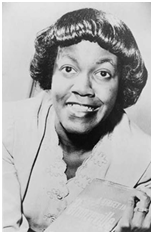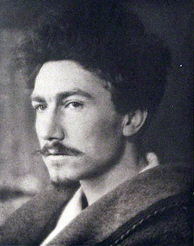
Lesson 8: Working with Poetry
The basics of poetry, wordplay techniques and how to overcome poetic roadblocks
Objectives:
- To identify and discuss the basic elements of poetry
- To study the basic structure of poetry
- To enumerate different techniques that can be used when writing poetry
- To identify hurdles to writing good poems and how to get past them
Quick Navigation through the Lesson 8:
- Poetry Basics: Elements
- Poetry Writing: Genres, Techniques & Examples
- Poetry Troubleshooting: Common Obstacles & Overcoming Them
Poetry is defined as a manner of writing in which emphasis is given to word choice (sound, image, meaning) and which employs the line as its fundamental unit (whereas in poetry, the sentence is the fundamental unit). Poetry uses enjambments or line cuts to state emphasis. In addition to this, it also makes use of figures of speech such as metaphors, similes and hyperboles more than any other genre of writing.
[gview file=”http://www.professays.com/wp-content/uploads/Lesson-8.pptx” height=”380px” width=”530px” save=”0″ cache=”0″]
Poetry Basics: Elements
A good poem is one which is cohesive—this can be attained by making sure that all of its elements are in harmony with one another. This harmony is called Organic Unity; this was defined by Aristotle as the coming together of an art’s elements to form an effective reflection or mimicry (mimesis) of the real world. Below are the basic elements of fiction and their definitions.
Form. This pertains to both the physical and metaphysical structure of the poem. It means the number of lines in a stanza and the number of stanzas in the poem. But more than that it also refers to what the poem aims to achieve by existing. Lyric Poems aim to convey emotion (usually by putting emphasis on the musicality of the poem), Narrative Poems aim to tell a story (as with the epic poems like The Odyssey) and Descriptive Poems aim to pay homage to the environment through the use of adjectives (as with the Japanese Haiku).
Imagery. This element refers to the images or descriptions used in a poem to be able to accurately attain the effect that the poet uses. For example, Edgar Allan Poe used the image of the raven to conjure a feeling of dread and foreboding in his poem The Raven.
Musicality. This has less to do with rhyming (i.e. “the cat in the hat”) and more to do with the stop-and-flow created by words and pauses. For instance, the poem by Gwendolyn Brooks called “We Real Cool” uses line cuts so that the piece is recited in a sing-song manner that adds both the element of surprise and enhances the frivolity of the activities being described.

It goes:
We real cool, we
left school, we
lurk late, we
strike straight, we
sing sin, we
thin gin, we
jazz June, we
die soon.
Meter. This pertains to the number of syllables in a line. This also pertains to different pattern stresses in a line. While the classifications listed below aren’t strictly enforced in most modern-day poetry, the fluctuations of stress on the syllables are still useful to keep in mind when writing poems because they lend a lot to the element of Musicality.
An iamb is when a weak syllable is followed by a strong syllable (i.e. a cow).
A trochee is when a strong syllable is followed by a weak syllable (i.e. fair-er/than the/prin-cess).
An anapest is when two weak syllables are followed by two strong syllables (i.e. on this night / of all nights).
A dactyl is two strong syllables followed by two weak syllables (i.e. kick her now/ cap-tain said)
[WpProQuiz 38]
Poetry Writing: Genres, Techniques & Examples
Now that we are aware of the basic elements of poetry, we have to know how we can utilize them to create a good poem. Here are some techniques to help you out.
Keep in mind the economy of words. Because poetry is short, every word matters. While in prose, there is the luxury (and perhaps burden) of being wordy, word choice is especially crucial in poetry.
For example, in the poem:

“Subterranean” by Eric Gamalinda, he says:
I fear none of us will last long enough
to prove what I’ve always suspected,
that the sky is a membrane
in an angel’s skull,
trees talk to each other at night,
ice is water in a state of silence,
the embryo listens to everything we say.
Had he used different words, for example other than “water in a state of silence” to describe ice, the entire feel of the poem would have changed even if the meaning had been retained (i.e. “liquid form” or “frozen water”).
Read your poems aloud. Jonathan Mayhew, who was known for his strong socio-political views said that poetry is language aspiring to music. Because of this and its condensed, metaphorical form, poetry relies heavily on how things sound. Below are a couple of techniques you may be interested in incorporating in your own poetry.
An alliteration is when the first two letters of two consecutive words are the same (i.e. always asking ).
Assonance is when contingent words contain the same vowel sounds (i.e. fake shame).
Consonance is when contingent words contain the same consonant sounds (i.e. all the stillness)
Onomatopoeia is when words sound like the actions they describe (i.e. BAM! THWACK!)
A great example of this is Edgar Allan Poe’s Anabel Lee, it goes:
It was many and many a year ago,
In a kingdom by the sea,
That a maiden there lived whom you may know
By the name of Annabel Lee;
And this maiden she lived with no other thought
Than to love and be loved by me.
I was a child and she was a child,
In this kingdom by the sea,
But we loved with a love that was more than love—
I and my Annabel Lee—
With a love that the wingèd seraphs of Heaven
Coveted her and me.
And this was the reason that, long ago,
In this kingdom by the sea,
A wind blew out of a cloud, chilling
My beautiful Annabel Lee;
So that her highborn kinsmen came
And bore her away from me,
To shut her up in a sepulchre
In this kingdom by the sea.
The angels, not half so happy in Heaven,
Went envying her and me—
Yes!—that was the reason (as all men know,
In this kingdom by the sea)
That the wind came out of the cloud by night,
Chilling and killing my Annabel Lee.
But our love it was stronger by far than the love
Of those who were older than we—
Of many far wiser than we—
And neither the angels in Heaven above
Nor the demons down under the sea
Can ever dissever my soul from the soul
Of the beautiful Annabel Lee;
For the moon never beams, without bringing me dreams
Of the beautiful Annabel Lee;
And the stars never rise, but I feel the bright eyes
Of the beautiful Annabel Lee;
And so, all the night-tide, I lie down by the side
Of my darling—my darling—my life and my bride,
In her sepulchre there by the sea—
In her tomb by the sounding sea.
Focus on one image. Most good poetry is compact. It conveys one emotion through one image. You achieve this in your own poetry by focusing on one image and building around it. For example, in the poem In A Station of the Metro by Ezra Pound, the entire poem revolves around just one image: a petals falling on a black ribbon.

It goes:
The apparition of these faces in the crowd;
Petals on a wet, black bough.
Use figures of speech. Figures of speech add a deeper level to the poem which you’ve written. It makes the images you’ve conjured mean more than what it is, physically. Examples of figures of speech are:
Simile. This is when “as” or “like” are used when making comparisons (i.e. thin as a stick).
Metaphors. This is when “as” or “like” are omitted and the comparison is made directly (i.e. you’re a whale).
Synecdoche. This is when one object is covertly used to describe something bigger (i.e. a beat up minivan used to describe a dysfunctional marriage).
Hyperbole. This is the intentional exaggerated use of descriptions (i.e. there’s an earthquake going on in my head).
Personification. This is the attribution of human traits to inanimate objects (i.e.the train rambled into the station, kicking and screaming).
[WpProQuiz 39]
Poetry Troubleshooting: Common Obstacles & Overcoming Them
Now you know about the basics of the poetic form and certain techniques which may come in handy while writing poems. The next thing to focus on is how to overcome obstacles that commonly occur when writing poetry.
Prosaic tendencies. Most of the things we write in day-to-day life are prosaic things—meaning they are stated declaratively (i.e. I wrote this or He ate that). In poetry, we let go of this type of writing and use as few words as possible—these words also have to be words that are packed with meaning. The best way to do this is to list down synonyms for the words that you mean and use that which best suits the imagery of your poem.
Over-fidelity to rhyme. In school, a lot of us were taught that poems must rhyme. This can be detrimental to the flow and effectiveness of a poem as most rhyming poems can either sound juvenile (as in nursery rhymes) or old-fashioned. More than rhyme, think of rhythm and how the poem sounds.
Fondness of clichés. While there is no such thing as original thought—Aristotle said that all works of art are permutations of love and death—there are certain thoughts are have been used so often that they fail to evoke strong emotions from the read (i.e. Love is blind). Try to think of a new way to frame what you mean by writing down what the cliché is try to say (i.e. “we ignore bad things about the people we love”) and re-phrase it in a way that employs the techniques mentioned above (i.e. “my love-lorn heart needs to get itself spectacles”).
[WpProQuiz 40]
In conclusion, we can say that poetry is a form which focuses on condensed meaning by putting emphasis on word choice, sound and imagery. Its basic elements include (but are not limited to) form, imagery, musicality and meter. A good poem is judged by the congruence and emotion evoked by the coming together of these elements. There are a number of techniques which one can employ to write good poetry. Among these are observing the economy of words, using figures of speech and employing sound devices.
The goal of learning about the basic elements and techniques when writing poems is for you to be able to write your own poetry. We’re going to tackle this in our next lesson: how to form poems. Keep on reading to learn how you can master the poetry genre and use it to further your creative writing.
 + 1-888-827-0150
+ 1-888-827-0150 + 44-20-3006-2750
+ 44-20-3006-2750










